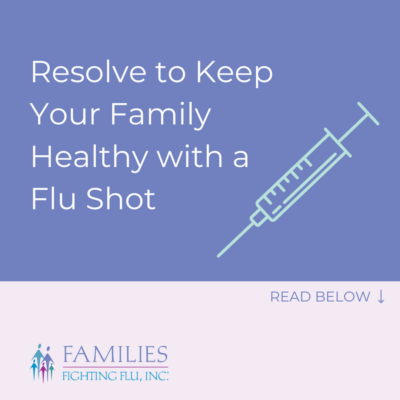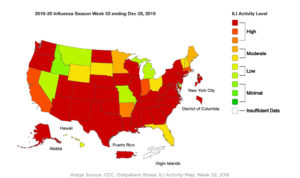
- Flu News & Surveillance
Flu Surveillance in the U.S.

Flu activity in the U.S. is tracked through collaborative efforts between the Centers for Disease Control and Prevention (CDC) and partners including public health and clinical laboratories, healthcare providers, state, local, and territorial health departments, clinics, emergency departments, and vital statistics offices. The following five systems are used to monitor flu activity in the United States and allow the CDC to answer the questions of where, when, and what flu viruses are circulating.
1. Virologic Surveillance
Numerous laboratories across the U.S. collect respiratory samples from sick people throughout flu season to determine the number of people that test positive for influenza (flu). This information includes identifying which flu strains are circulating, which age groups are being affected, and where flu activity is occurring. These laboratories then report this information to the CDC on a weekly basis.
2. Outpatient Illness Surveillance
CDC also tracks influenza-like illness (ILI) through a network of over 2,600 healthcare providers across the U.S. Each week, these providers report to CDC how many patients they saw with influenza-like illness, which is defined as someone having a fever and a cough and/or a sore throat that cannot be attributed to another type of illness. This information is broken down into ten regions, each of which consist of several U.S. states.
3. Geographic Spread of Influenza
State and territorial health departments report to the CDC every week on how widespread flu activity is within each of their jurisdictions. These estimates do not measure the severity of flu activity.
4. Hospitalization Surveillance
This surveillance network identifies and tracks laboratory-confirmed, flu-related hospitalizations in children and adults in numerous counties and states across the U.S. This information is used to estimate age-specific hospitalization rates on a weekly basis, which is then reported to the CDC. This information also identifies if the hospitalized individuals fall into any high-risk categories for flu (e.g., pregnant women, people with pre-existing health conditions).
5. Mortality Surveillance
Vital statistics from each U.S. state are used to identify pneumonia and influenza (P&I) deaths. Every week, this information is used to calculate the percentage of total deaths that listed pneumonia and/or influenza as a cause of death. Flu-related deaths in children less than 18 years of age has been a nationally notifiable condition since 2004, meaning that these deaths must be reported to CDC and the child must have been tested for influenza using an appropriate laboratory diagnostic test.
Where can I find this information?
Every week during flu season, data from these surveillance systems are uploaded to CDC’s FluView. For a more visual representation of these data that shows charts and graphs, you can visit FluView Interactive.



